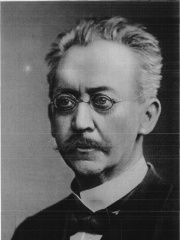
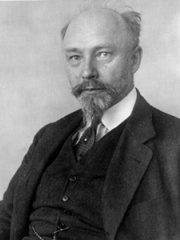
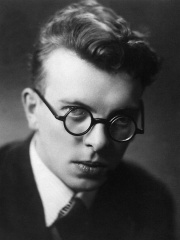
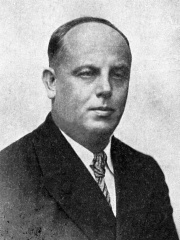
The Most Famous
PHILOSOPHERS from Estonia
This page contains a list of the greatest Estonian Philosophers. The pantheon dataset contains 1,267 Philosophers, 5 of which were born in Estonia. This makes Estonia the birth place of the 40th most number of Philosophers behind Belarus, and Finland.
Top 5
The following people are considered by Pantheon to be the most legendary Estonian Philosophers of all time. This list of famous Estonian Philosophers is sorted by HPI (Historical Popularity Index), a metric that aggregates information on a biography's online popularity.

1. Adolf von Harnack (1851 - 1930)
With an HPI of 67.84, Adolf von Harnack is the most famous Estonian Philosopher. His biography has been translated into 34 different languages on wikipedia.
Carl Gustav Adolf von Harnack (born Harnack; 7 May 1851 – 10 June 1930) was a Baltic German Lutheran theologian and prominent Church historian. He produced many religious publications from 1873 to 1912 (in which he is sometimes credited as Adolf Harnack). He was ennobled (with the addition of von to his name) in 1914. Harnack traced the influence of Hellenistic philosophy on early Christian writings and called on Christians to question the authenticity of doctrines that arose in the early Christian church. He rejected the historicity of the Gospel of John in favor of the Synoptic Gospels, criticized the Apostles' Creed, and promoted the Social Gospel. In the 19th century, higher criticism flourished in Germany, establishing the historical-critical method as an academic standard for interpreting the Bible and understanding the historical Jesus (see Tübingen school). Harnack's work is part of a reaction to Tübingen, and represents a reappraisal of tradition. Besides his theological activities, Harnack was a distinguished organizer of sciences. He played an important role in the foundation of the Kaiser Wilhelm Gesellschaft and became its first president.

2. Hermann von Keyserling (1880 - 1946)
With an HPI of 63.26, Hermann von Keyserling is the 2nd most famous Estonian Philosopher. His biography has been translated into 21 different languages.
Hermann Alexander Graf von Keyserling (20 July [O.S. 8] 1880 – 26 April 1946) was a Baltic German philosopher from the Keyserlingk family. His grandfather, Alexander von Keyserling, was a notable geologist of Imperial Russia.

3. Uku Masing (1909 - 1985)
With an HPI of 56.34, Uku Masing is the 3rd most famous Estonian Philosopher. His biography has been translated into 21 different languages.
Uku Masing (born Hugo Albert Masing, 11 August 1909 – 25 April 1985) was an Estonian polymath who contributed to theology, oriental studies, philosophy, poetry, folklore and to the field of ethnology. He was a significant figure in Estonian religious philosophy. Masing also wrote poetry, mostly on religious issues. Masing authored one novel, Rapanui vabastamine ehk Kajakad jumalate kalmistul (Liberation of Rapa Nui, or Seagulls at the Cemetery of Gods) in the late 1930s, which was published posthumously in 1989. As a folklorist, he was a distinguished researcher of fairy tales, contributing to the international Encyclopedia of the Folktale. He was awarded the Righteous Among The Nations by Yad Vashem and the Israeli Supreme Court for his participation during the Holocaust in helping a Jew in Estonia escape capture from 1941 until the end of the war. His actions exposed him to great danger during this period requiring him to meet with his friend as well as lying to the Gestapo.

4. Hendrik Adamson (1891 - 1946)
With an HPI of 54.89, Hendrik Adamson is the 4th most famous Estonian Philosopher. His biography has been translated into 20 different languages.
Hendrik Adamson (6 October [O.S. 24 September] 1891 – 7 March 1946) was an Estonian poet and teacher. He was born as a son of a tailor in Patsi farmstead in the village of Metsakuru, Kärstna Parish (now in the village of Veisjärve, Viljandi Parish), Viljandi County. He started working as a teacher at the Torma Võtikvere Ministry of Education in 1911. During this time, he published several short stories (in prose) and poems in newspapers. This works attracted the attention of Friedebert Tuglas, a literary critic. From 1919 to 1927 he was the head of the primary school in Kärstna. Subsequently, he became a professional writer and a member of the Estonian Writers' Union. Adamson also wrote in Esperanto. All of his Estonian works have been translated into Esperanto. Notable poems include "Mulgimaa" (Tartu, 1919), "Inimen" (Tartu, 1925), "Tõus ja mõõn" (Tartu, 1931), "Kolletuspäev" (Tartu, 1934), "Mälestuste maja" (Tartu, 1936) and "Linnulaul" (Tartu, 1937). He also published the novels "Kuldblond neitsi" and "Roheline sisalik" (Tartu, 1925).
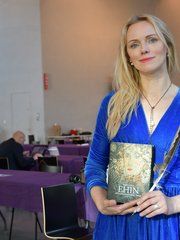
5. Kristiina Ehin (b. 1977)
With an HPI of 37.68, Kristiina Ehin is the 5th most famous Estonian Philosopher. Her biography has been translated into 14 different languages.
Kristiina Ehin (born 18 July 1977) is an Estonian poet, translator, singer and songwriter. Ehin studied at University of Tartu with a degree in philology and specializes in folklore. In 2004, she acquired master's degree in the Estonian language and comparative folklore field at the University of Tartu. The master's thesis topic was "The Possibilities for Interpretation of the Oldest and Newer Lied of Estonia in the Female-Religious Perspective". She has worked as a teacher at Vodja school. Ehin has sung in the ensemble Sinimaniseele and from 2012, in the ensemble Naised Köögis (English: Women in the Kitchen), whose members are Katrin Laidre, Sofia Joons and Kairi Leivo. She represented Estonia at the satellite event of the 2012 Summer Olympics in London, Poetry Parnassus, which took place from 26 June to 1 July 2012. From 2015 to 2016, Ehin was Professor of Liberal Arts at the University of Tartu.
People
Pantheon has 5 people classified as Estonian philosophers born between 1851 and 1977. Of these 5, 1 (20.00%) of them are still alive today. The most famous living Estonian philosophers include Kristiina Ehin. The most famous deceased Estonian philosophers include Adolf von Harnack, Hermann von Keyserling, and Uku Masing. As of April 2024, 1 new Estonian philosophers have been added to Pantheon including Kristiina Ehin.
Living Estonian Philosophers
Go to all RankingsDeceased Estonian Philosophers
Go to all RankingsAdolf von Harnack
1851 - 1930
HPI: 67.84
Hermann von Keyserling
1880 - 1946
HPI: 63.26
Uku Masing
1909 - 1985
HPI: 56.34
Hendrik Adamson
1891 - 1946
HPI: 54.89
Newly Added Estonian Philosophers (2025)
Go to all RankingsOverlapping Lives
Which Philosophers were alive at the same time? This visualization shows the lifespans of the 4 most globally memorable Philosophers since 1700.

